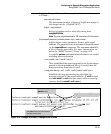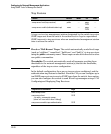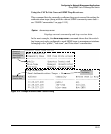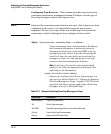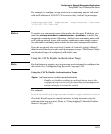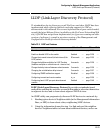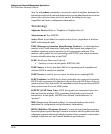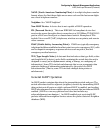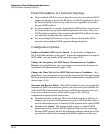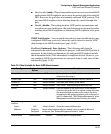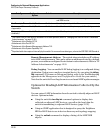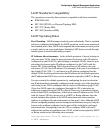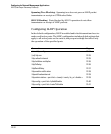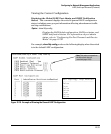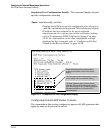
12-27
Configuring for Network Management Applications
LLDP (Link-Layer Discovery Protocol)
NANP (North American Numbering Plan): A ten-digit telephone number
format where the first three digits are an area code and the last seven-digits
are a local telephone number.
Neighbor: See “LLDP Neighbor”.
Non-LLDP Device: A device that is not capable of LLDP operation.
PD (Powered Device): This is an IEEE 802.3af-compliant device that
receives its power through a direct connection to a 10/100Base-TX PoE RJ-45
port in a ProCurve fixed-port or chassis-based switch. Examples of PDs
include Voice-over-IP (VoIP) telephones, wireless access points, and remote
video cameras.
PSAP (Public Safety Answering Point): PSAPs are typically emergency
telephone facilities established as a first point to receive emergency (911) calls
and to dispatch emergency response services such as police, fire and
emergency medical services.
TLV (Type-Length-Value): A data unit that includes a data type field, a data
unit length field (in bytes), and a field containing the actual data the unit is
designed to carry (as an alphanumeric string, a bitmap, or a subgroup of
information). Some TLVs include subelements that occur as separate data
points in displays of information maintained by the switch for LLDP
advertisements. (That is, some TLVs include multiple data points or
subelements.)
General LLDP Operation
An LLDP packet contains data about the transmitting switch and port. The
switch advertises itself to adjacent (neighbor) devices by transmitting LLDP
data packets out all ports on which outbound LLDP is enabled, and reading
LLDP advertisements from neighbor devices on ports that are inbound LLDP-
enabled. (LLDP is a one-way protocol and does not include any
acknowledgement mechanism.) An LLDP-enabled port receiving LLDP
packets inbound from neighbor devices stores the packet data in a Neighbor
database (MIB).



